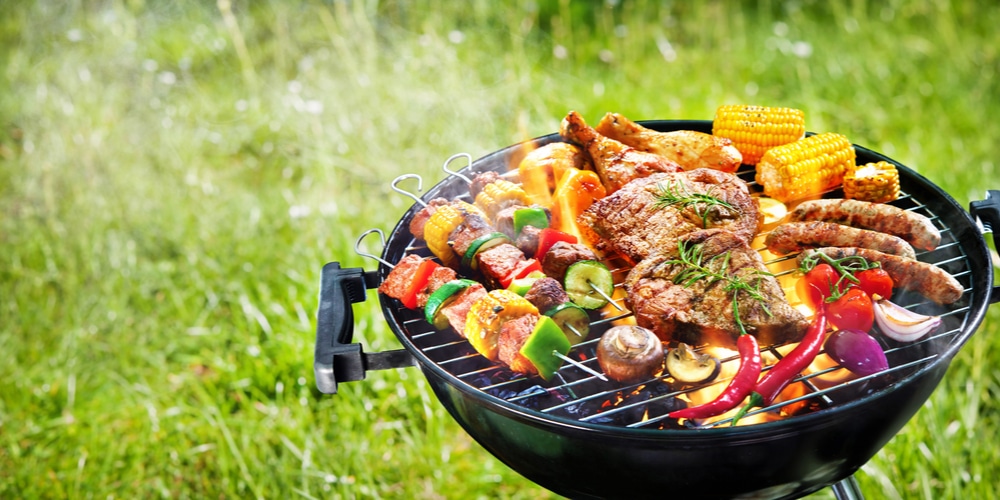Mastering the Art of Veggies on a Charcoal Grill: Your Ultimate Guide
Written By James Morgan
There's something magical about the smoky allure of a charcoal grill. For those who wonder 'how to cook veggies on a charcoal grill,' this comprehensive guide will take you through every step. Whether you're a seasoned BBQ enthusiast or just starting, this journey will unravel tricks and techniques to perfect the art of grilling vegetables.

The Essentials: Equipment You Need
Before diving into the steps, gather the essential equipment. A reliable charcoal grill like the Barrel Charcoal Grill or the Kettle 22-Inch Charcoal Grill is indispensable. A quality knives set will ensure precise cuts, enhancing the grilling experience.

Why Choose Charcoal for Grilling Veggies?
Charcoal grills infuse vegetables with a unique, smoky flavor that's hard to replicate with gas grills. The even heat distribution and the ability to reach high temperatures make charcoal grills ideal for perfectly charred vegetables. Additionally, the process of using charcoal grills is experiential, often turning a simple meal preparation into an engaging activity.

Getting Started: The Charcoal Setup
Lighting the Charcoal
Start by arranging the charcoal in a pyramid shape at the center of the grill. Use a chimney starter to light the coals uniformly. Wait until the coals are covered with white ash, indicating they are hot enough.
Maintaining the Heat
Spread the hot coals evenly at the base of the grill to ensure consistent heat. For indirect grilling, pile the coals on one side, creating a two-zone setup. This method is excellent for vegetables requiring varied cooking times. For more tips, check out our guide on alternate methods for cooking mushrooms.

Prepping Your Veggies
Choosing the Right Vegetables
Not all vegetables are grill-friendly. Opt for firm vegetables like bell peppers, zucchinis, eggplants, asparagus, and corn. These vegetables hold up well against high heat and retain a pleasant texture when grilled.
Cutting Techniques
Uniformity is key when prepping vegetables for the grill. Use your knives set to slice vegetables into even pieces, ensuring they cook evenly. Larger slices can be crisp-tender, while dice-sized pieces can char quickly, providing both textures and flavors. If you're curious about other cutting techniques, read our article on cutting chicken leg quarters.
Marinating and Seasoning
Marinating vegetables enhances their flavor profile. A basic marinade of olive oil, vinegar, garlic, and herbs can work wonders. Allow at least 30 minutes for the marinade to penetrate the vegetables. Seasoning with salt, pepper, and spices just before grilling can bring out their natural flavors.
The Grilling Process
Preheating the Grill
Always preheat your grill before placing vegetables on it. This step ensures the vegetables do not stick and get those perfect grill marks.
Placing the Vegetables on the Grill
Arrange vegetables directly on the grill grates or use a grill basket for smaller pieces. Maintain an even distribution to ensure consistent cooking. Avoid overcrowding to ensure each piece gets adequate heat exposure.
Timing and Monitoring
Grilling times vary based on the vegetable type and thickness. Bell peppers and zucchinis may take around 8-12 minutes, while corn can take up to 20 minutes. Keep an eye on the vegetables to prevent burning. Rotate and flip them as needed for uniform charring.
Maintaining Moisture
Grilling can dry out vegetables. To combat this, regularly brush vegetables with the marinade or oil. This step helps in retaining moisture and enhances the vegetables' flavor. For other creative ideas, see our creative grilling tips.
Serving Your Grilled Veggies
Plating Ideas
Presentation makes a significant difference. Arrange your grilled vegetables on a rustic wooden board or a vibrant platter. Garnish with fresh herbs like basil or cilantro for a burst of color and flavor.
Pairing Options
Grilled vegetables pair wonderfully with various dishes. Serve them alongside grilled meats, toss them in a salad, or use them as a pizza topping. They are also perfect as part of a vegetarian meal, paired with grains like quinoa or couscous.
Post-Grill Cleanup
Cleaning up after grilling is crucial for maintaining your equipment. Use a stainless steel cleaner to keep your grill looking new. Remember to condition your cutting board with a good cutting board conditioner to prolong its lifespan and maintain hygiene.
Conclusion
Learning 'how to cook veggies on a charcoal grill' elevates your BBQ game and adds a healthy twist to your grilling repertoire. Experimenting with different vegetables, marinades, and grilling techniques can lead to new and exciting flavor combinations. Whether it's an intimate family barbecue or a large outdoor gathering, grilled vegetables are certain to be a hit. Embrace the smoky goodness, and let your culinary creativity shine through! For more grilling inspiration, visit this external guide.
As an Amazon Associate, I earn from qualifying purchases.



